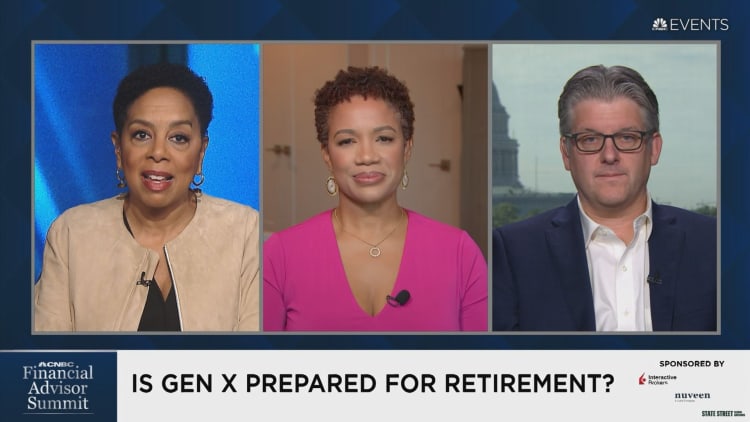Ethan Hawke sits with Winona Ryder in a scene from the 1994 film “Reality Bites.”
Universal Pictures | Moviepix | Getty Images
As Generation X knows all too well, “reality bites,” to quote the iconic 1994 film of the same name.
Most Gen Xers — roughly defined as those born between 1965 and 1980 — are failing to meet retirement savings targets. The typical Gen X household has just $40,000 in retirement savings in private accounts, according to the National Institute on Retirement Security.
“When we think about retirement preparation, we worry about the large numbers of people who are not on track,” Dan Doonan, executive director of the National Institute on Retirement Security, said Thursday at CNBC’s Financial Advisor Summit.
More from FA 100:
Here’s a look at more coverage of CNBC’s FA 100 list of top financial advisory firms for 2023:
Across the board, many Americans worry about their financial well-being and retirement plans. Over half of working adults feel behind on their retirement savings, according to a recent Bankrate study.
But when broken down by generation, Gen Xers are most likely to feel this way, followed by baby boomers then millennials and then Gen Zers, Bankrate found. Gen X workers are also most likely to say they are contributing less to their retirement savings this year compared to last year.
More than half of Gen X workers, or roughly 57%, think it is not likely they will save enough to retire comfortably, according to Bankrate.

At the same time, the average 401(k) balance among Gen Xers is $153,300, up nearly 15% from a year ago, according to the latest data from Fidelity Investments, the nation’s largest provider of 401(k) plans.
Gen X savers have benefited significantly from improved defined contribution plans, including newer plan features such as auto enrollment and auto escalation.
Why Gen X is falling behind
Yet, “they still have a big savings gap relative to what they need in retirement,” Fiona Greig, global head of investor research and policy at Vanguard, said at the summit.
Financial pressure from the rising costs of higher education and health care, as well as ballooning student loan balances, have weighed heavily, Vanguard’s retirement readiness report found.
This generation is also projected to live longer than boomers, adding another hurdle to their savings shortfall. “They are living a full year longer, but they are not working a full year longer,” Greig said.
How the ‘sandwich generation’ can get on track
For clients in their 40s and 50s, “we dig into why they feel behind,” certified financial planner Lazetta Rainey Braxton, co-founder and co-CEO of 2050 Wealth Partners, said at the summit.
Often, “life has happened and the financial responsibilities have increased,” said Braxton, who is also a member of CNBC’s Financial Advisor Council.
They are the so-called “sandwich generation” for a reason, she added. “They are supporting the generations ahead of them and also building and expanding their family which requires resources for the generations behind them.”
Still, there are investment vehicles available that can help, including what your employer offers and individual retirement accounts.
“If they are coming to us a little later, we put everything on the table so we can move forward in a way that’s realistic,” said Braxton.
[ad_2]
Source link













